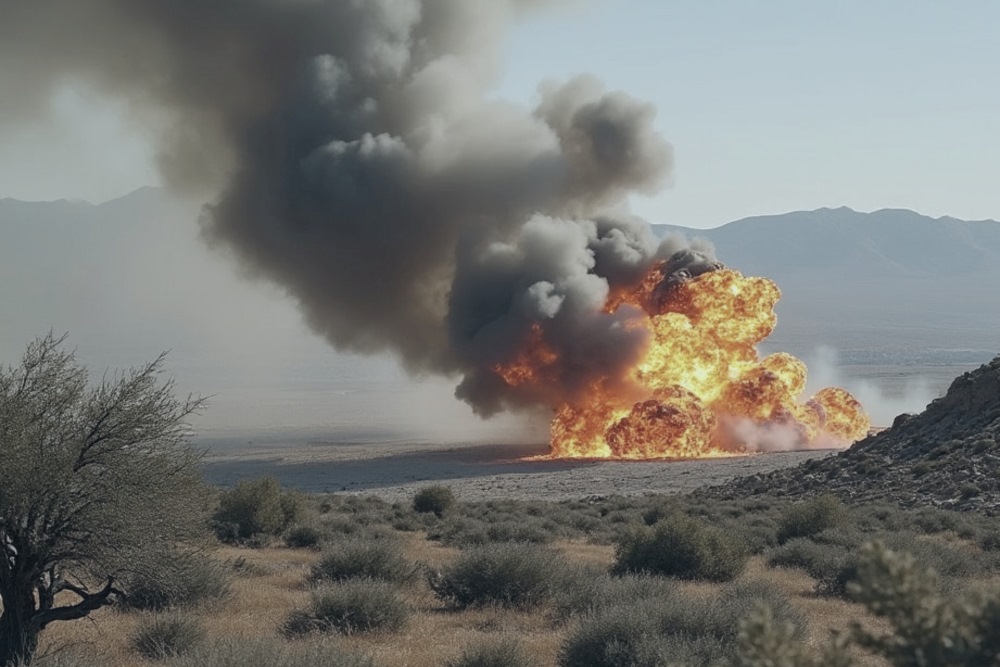
For years, Hezbollah meticulously prepared for a large-scale assault on northern Israel. But then came Hamas and ruined it all.
The heavily armed Hezbollah, operating under Iran’s strategic guidance, built a sprawling military infrastructure along the Israel-Lebanon border. It amassed hidden terror compounds, extensive weapons caches, and well-supplied logistics bases.
By October 2023, Hezbollah had in place everything needed to execute a mass invasion into northern Israel.
But Hezbollah’s grand strategy unraveled on October 7, when Hamas launched a surprise assault on southern Israel. Although Hamas inflicted severe damage, it did not fully coordinate the attack with Iran axis allies, drastically undermining Hezbollah’s long-term plans.
The collapse of surprise
Hezbollah’s grand plan relied heavily on the element of surprise to overwhelm IDF forces and seize Israeli territory. The Hamas decision to launch a similar operation shattered this strategy.
In the immediate aftermath of the October 7 attack, the IDF rapidly bolstered its defenses along the northern border, quickly deploying thousands of troops and fortifying key positions.
What’s more, Israel entirely shifted its posture, now anticipating the possibility of a sudden, large-scale invasion from Lebanon. With Israel on high alert, the element of surprise Hezbollah was counting on evaporated.
The weeks and months following the Hamas attack brought escalating tensions on the Lebanon border. Hezbollah initially attempted to engage Israel through low-intensity exchanges, including rocket and anti-tank missile attacks. But this gradual escalation backfired.
The IDF responded with greater force and precision, targeting Hezbollah’s assets in southern Lebanon with airstrikes and artillery. Pinpoint strikes took out weapons stockpiles, military positions and key operatives, gradually eroding Hezbollah’s ability to operate effectively.
The Israeli campaign intensified in recent months, transforming what Hezbollah hoped would be a future battlefield into a zone of relentless attrition, with mounting losses.
Hezbollah’s front line shattered
The final blow came as the IDF launched a ground incursion into southern Lebanon, targeting Hezbollah’s entrenched positions near the border. This operation struck at the heart of Hezbollah’s long-planned invasion infrastructure.
Hidden bunkers, fortified compounds, and supply depots that took long years to build were uncovered and systematically dismantled.
Hezbollah’s fighters, ill-equipped for a direct confrontation with a superior military force, offered little resistance. Many withdrew deeper into Lebanon, leaving behind stockpiles of weapons and critical infrastructure.
This enabled the IDF to seize vast quantities of weapons and other military gear, effectively disarming Hezbollah’s front line forces. This outcome is a strategic nightmare for Hezbollah.
For years, the group invested heavily in building a war machine along Israel’s northern border. The expectation was that, when the time came, these assets would allow Hezbollah to launch a decisive invasion. Instead, it found itself embroiled in a conflict it never intended to fight.
With the IDF methodically demolishing Hezbollah’s front line, the carefully planned invasion corridor is being entirely destroyed. Unable to mount a strong defense, Hezbollah essentially gave up without a fight a massive array of military assets that cost billions and are now lost.
Hezbollah pays for Hamas mistake
At the core of Hezbollah’s misfortune lies the chaotic nature of Iran’s proxy network, which appeared formidable in practice but faltered in real time. [here’s a detailed article on the collapse of Iran’s proxy strategy]
Hamas’ decision to act independently on October 7, based on loose understandings and commitments, turned out to be a grave mistake.
The Hamas invasion triggered an Israeli response that not only destroyed the Gaza terror base, but also pushed Hezbollah into an unplanned and costly conflict. Ultimately, it fully sabotaged Hezbollah’s strategic plan.
What was meant to be Hezbollah’s trump card – a massive military buildup on Israel’s border – has now turned into a liability. Stuck with infrastructure it cannot use or move, Hezbollah is watching years of preparation crumble before its eyes.
In retrospect, the reckless Hamas gamble left Hezbollah exposed and vulnerable, greatly weakened and forced to reconsider its core strategy.
What was once seen as a carefully planned future offensive has turned into an unmitigated strategic disaster. And with each passing day, the IDF is taking further steps to ensure that Hezbollah’s grand plan for northern Israel will never materialize.


